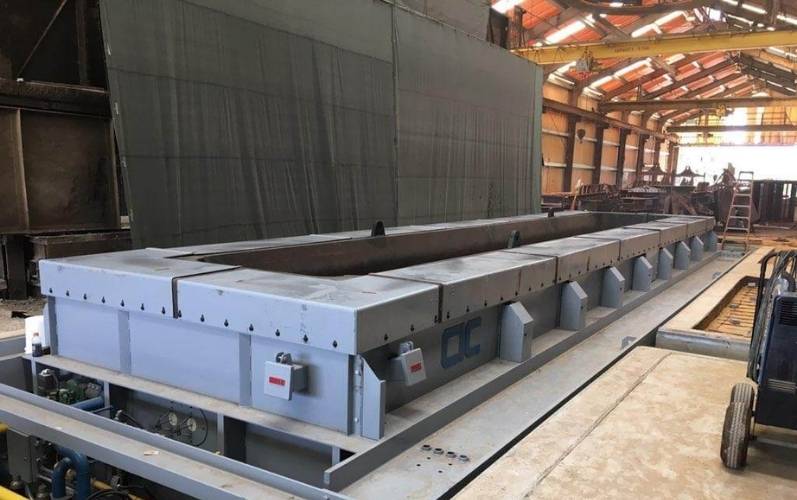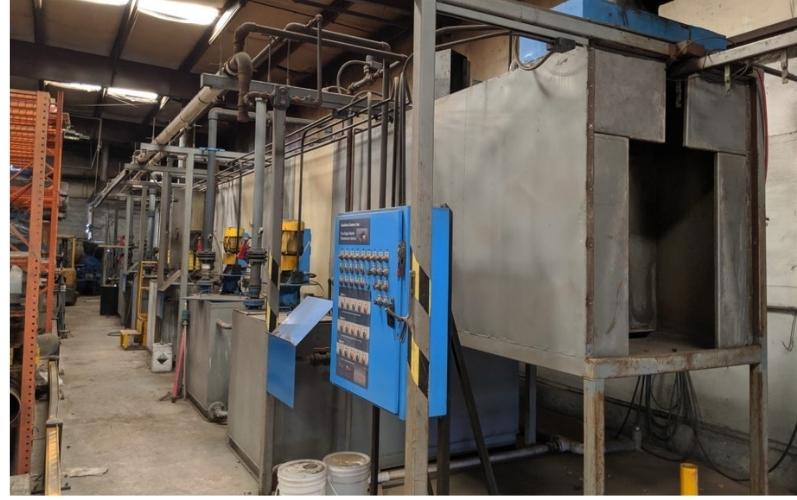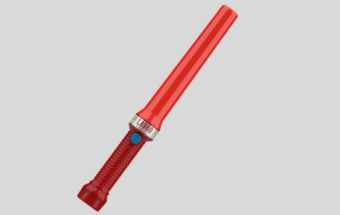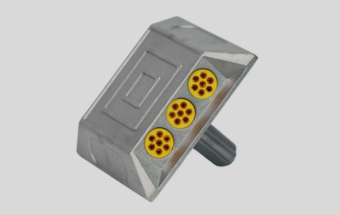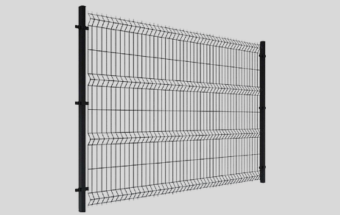Pedestrian Guardrail for Sale
JACKWIN offers various types of pedestrian guardrails at competitive prices for over 50 countries. We supply pedestrian standard guardrails, high-visibility pedestrian guardrails, decorative pedestrian guardrails, and pedestrian parapet guardrails in metal, wood, and polymer materials. Our factory offers OEM and ODM service, and our guardrails comply with standards such as EN 1317, BS 7818 (classes 1,2,3), CE, ASTM, and OSHA.
If you’re looking for a factory with a stable supply and high quality, JACKWIN is your best choice.
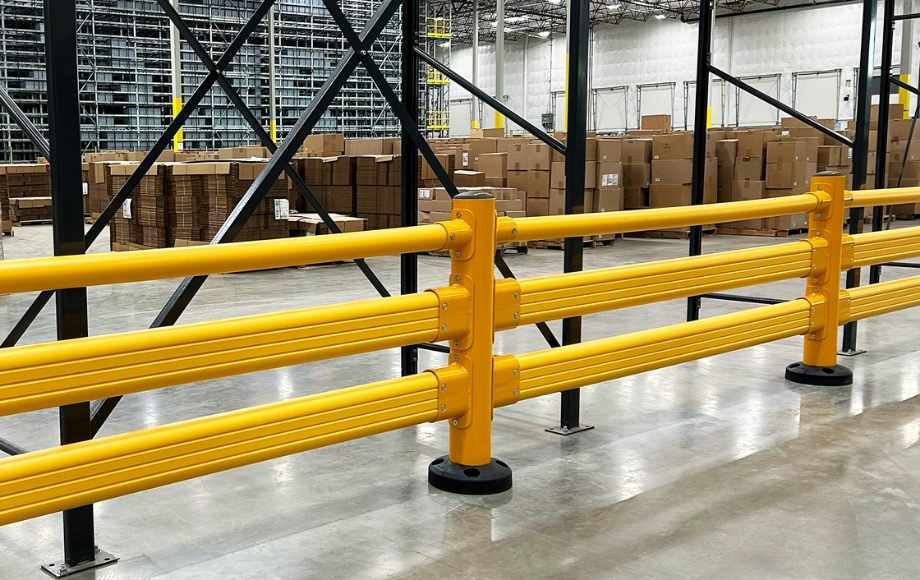
What is a Pedestrian Guardrail?
JACKWIN pedestrian guardrail, also called pedestrian safety guardrail and pedestrian guardrail fencing, provides vertical separation for vehicles and pedestrians, and horizontal separation for crowds.
What are the functions of JACKWIN pedestrian guardrail?
- Our guardrails can be folded and stacked to help contractors control transportation costs.
- Our guardrails can be customized with patterns, colors, and other branding elements to meet your company’s visibility needs.
- Our guardrails can be utilized across your various projects, enhancing reuse.
Pedestrian Guardrail by Features
JACKWIN supplies pedestrian guardrail for diverse applications and functionalities. If you require specific colors or dimensions, click to send detailed information.
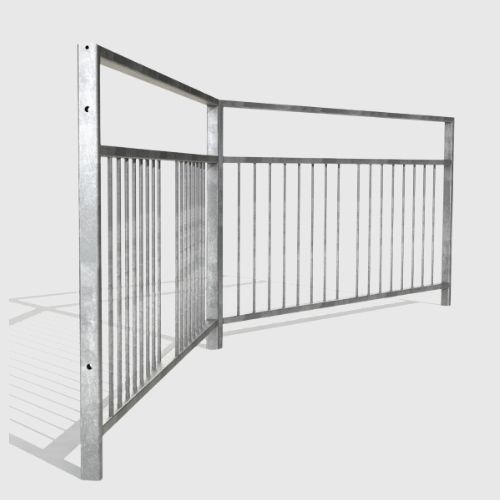
Made from box-section steel and infill bars, galvanized or galvanized powder coating, enhance visibility through staggered gaps.
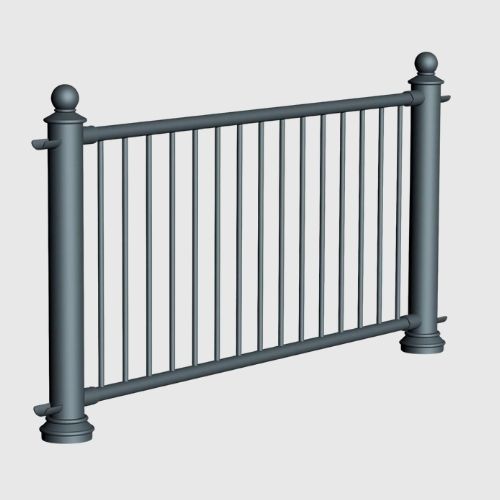
Equipped with vertical filler bars to enhance pedestrian visibility, primarily used to enhance the aesthetic appeal of streets and improve overall consistency.
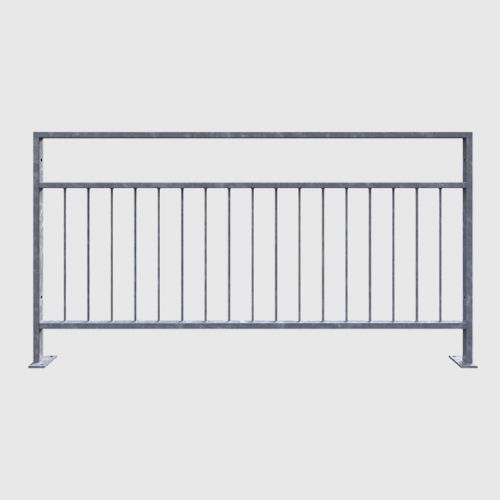
Fully comply with OSHA regulations, composed of stainless steel/aluminum alloy, colors and sizes customized.

Mounted via a base plate or directly sunk into the ground, height exceeding 1.4m, preventing falls from height.
Pedestrian Guardrails by Materials
JACKWIN offers pedestrian guardrails in different materials. Feel free to send your inquiry!
-
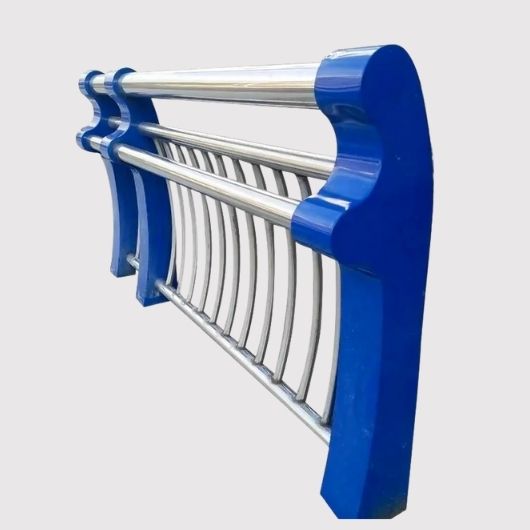 Stainless Steel Pedestrian Guardrail
Stainless Steel Pedestrian GuardrailComposed of stainless steel cables and steel posts, expands the horizon.
-
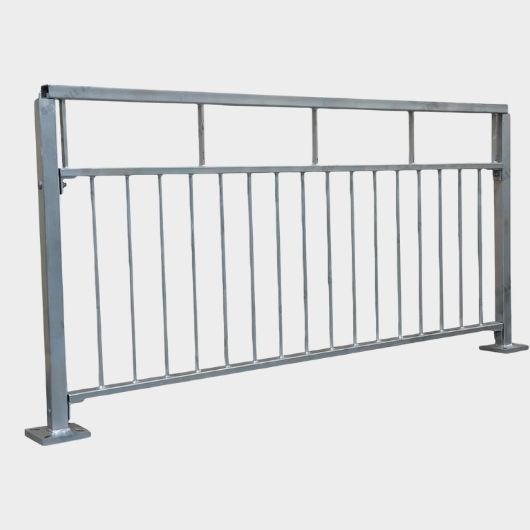 Galvanized Metal Pedestrian Guardrail
Galvanized Metal Pedestrian GuardrailPrimarily used for roadside installations, bridges, and urban parks, featuring robust durability and rust resistance.
-
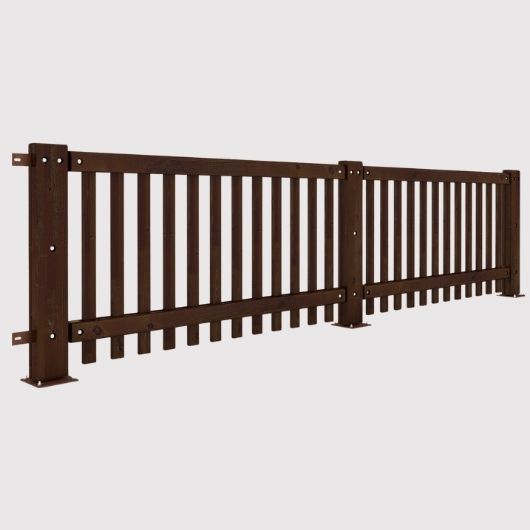 Wood Pedestrian Guardrail
Wood Pedestrian GuardrailWooden railings with tapered posts or steel posts, used for highways and factories.
-
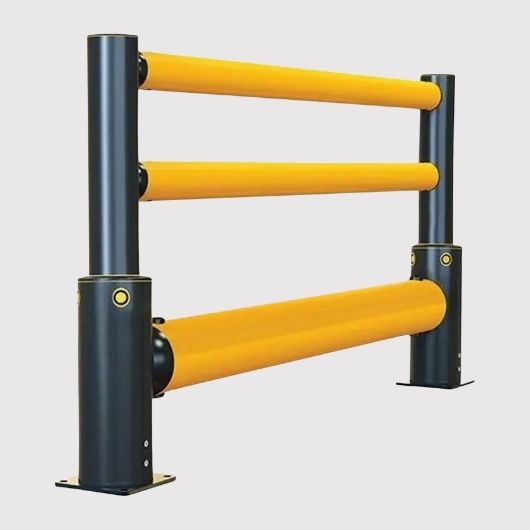 Polymer Pedestrian Guardrail
Polymer Pedestrian GuardrailPrimarily used in schools, parks, and for temporary crowd control, greater flexibility to absorb impact forces, lightweight, and corrosion-resistant.
Feature box
Our pedestrian guardrails offer numerous functions, features, and advantages. We will provide detailed descriptions of these features to help you make informed purchasing decisions.

Metal reflective materials or high-saturation yellow, with vertical railings spaced to provide an unobstructed view.

Withstand vehicle impacts ranging from 1.5 kN to 10 kN, effectively preventing injuries to pedestrians.

Separate pedestrians from pedestrians and pedestrians from vehicles to create distinct lanes for each, thereby preventing congestion.

Galvanized powder coating with added UV-resistant particles enhances adaptability in various high-altitude regions.

The maximum service life can reach 5 to 10 years, reducing maintenance frequency.

No foundation required; can be quickly moved or dismantled.

Suitable for bridges, construction sites, schools, park facilities, factories, and other areas.

Accommodate the styles and colors of different urban roads, ensuring harmony.
Customize Your Pedestrian Guardrail
JACKWIN provides customization of all dimensions, weights, colors, and materials at competitive costs for your pedestrian guardrails to boost your business.
Basic Components of Pedestrian Guardrails
Bolt-down vertical post
Posts are vertical support members designed to transmit impact forces to the ground. They are installed at intervals of 6 to 8 feet on the ground and feature cross-sectional shapes such as round tubes, square tubes, and I-beams.
Top rail
The top rail is positioned at hand height. According to OSHA standards, it must have a smooth surface to prevent scratches and be installed at a height of 42 inches above the walking surface.
Mild rail
Mild rail is a secondary safety barrier positioned between the top rail and the floor, designed to prevent personnel from falling or sliding out from beneath the top rail.
Toeboard
The toe board, as the vertical guardrail at the bottom, must extend at least 3.5 inches above the ground to prevent tools or equipment from falling over the edge.
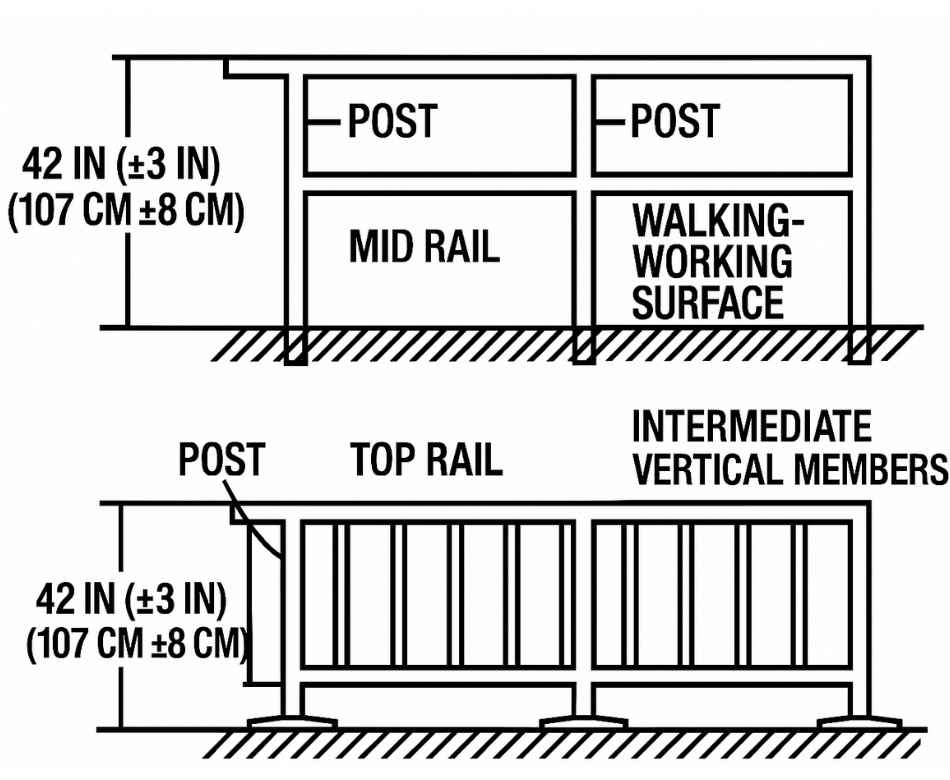

Pedestrian Guardrail Standard Detail
Type A:
Pillar: Φ150*1200
Metal base plate: 200*200
Crossbar: J70*50
Mechanical anchor bolt: M12*135
Type B:
Pillar: Φ150*1200
Metal base plate: 200*200
Crossbar: Φ90
Mechanical anchor bolt: M12*135
In accordance with OSHA regulations, our push rod must withstand an external force of at least 200 pounds (890 N). The center railing must be capable of withstanding a force of at least 150 pounds.
Removable Industrial Safety Guardrail Brackets
JACKWIN offers three types of removable railing brackets: face mount removable railing bracket, flush mount removable railing bracket, and floor mount removable railing bracket. Our products are suitable for mezzanines, loading docks, piers, or crowd control applications. Featuring a powder-coated finish over galvanized surfaces, they ensure high visibility and safety.
Our rail brackets can help you avoid legal liability and costs associated with worker injuries from falls, reduce efficiency losses, and prevent damage to your reputation. If you’re interested in our brackets, click below to contact us.
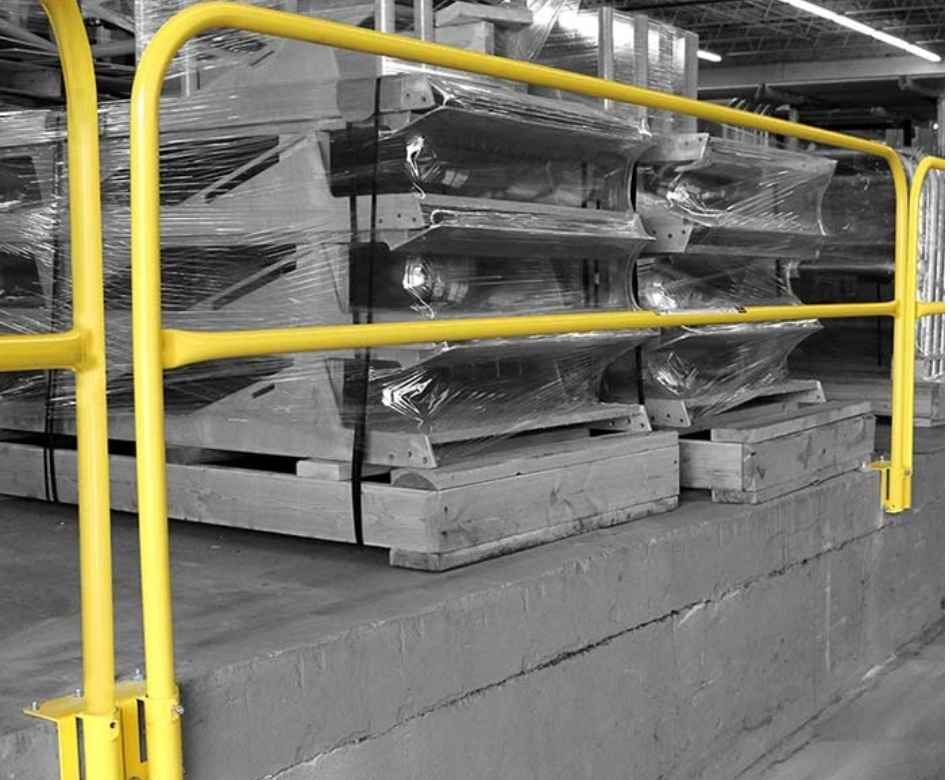
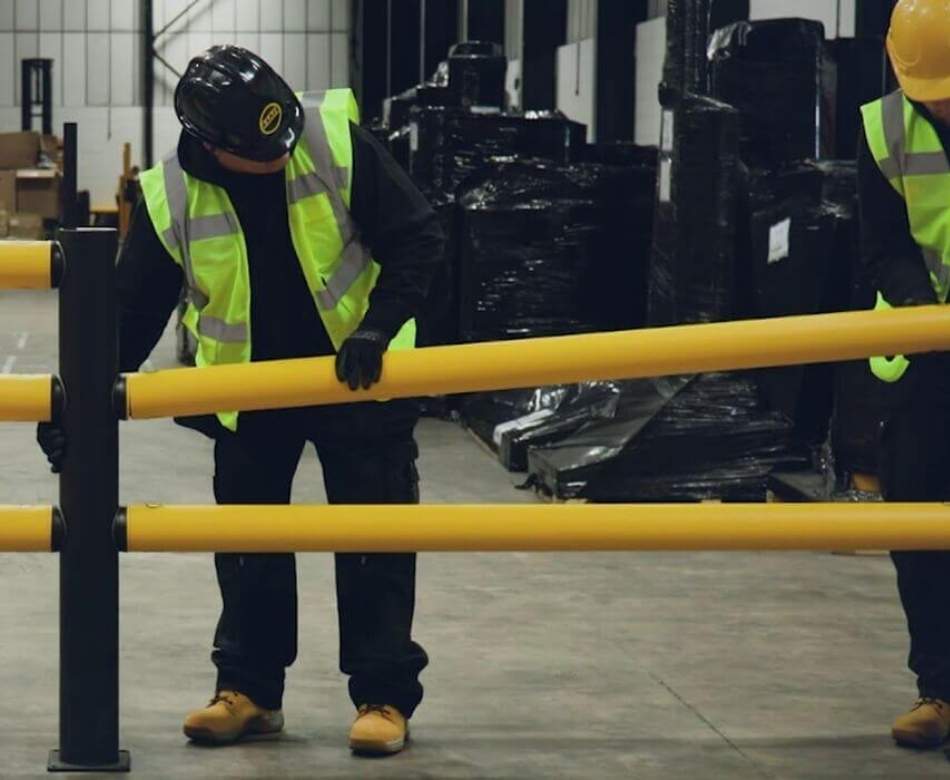
Pedestrian Guardrail Installation
Step 1: Determine the drilling positions and the length of the guide rails.
Step 2: Insert the guide rail, aligning the holes on the guide rod with the holes on the pillar, and secure it with screws.
Step 3: Secure the posts to the ground using base plates or by embedding them directly into concrete.
Step 4: Repeat the above steps to connect each section of guardrail.
What are the OSHA Regulations for Pedestrian Walkways?
Guardrails requirement for elevated walkways
If your roadway construction involves elevations 4 feet (1.2 meters) or higher above ground level, fall protection guardrails must be installed. These guardrails must be placed along open edges to prevent personnel from falling.
Walkways near industrial traffic
According to OSHA regulations, if your contracted work is located in an area where forklifts, transport vehicles, or work equipment are operating, guardrails must be installed to provide physical separation and protect personnel safety.
Ramps and inclined walkways requirements
According to OSHA regulations, if any slope on the roadway construction project you are undertaking exceeds 20°, you must install handrails or guardrails on both sides to prevent pedestrians from slipping or falling.
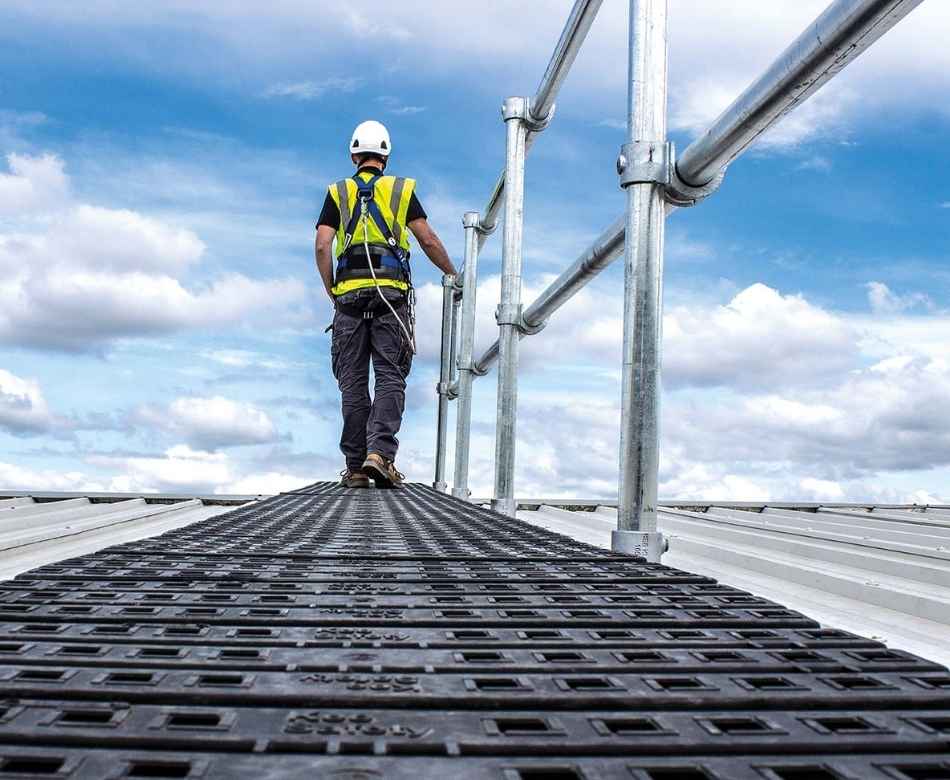
Resource
Polymer Pedestrian Guardrail vs Galvanized Metal Pedestrian Guardrail

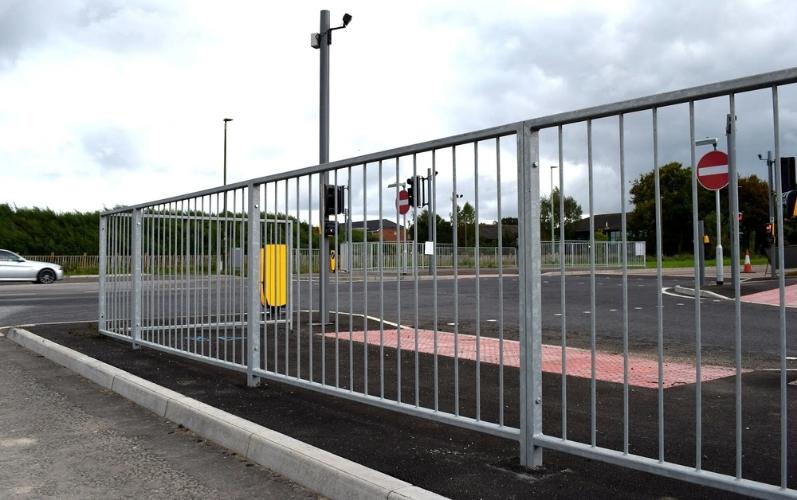
Polymer pedestrian guardrails are primarily composed of fiberglass and thermosetting resin composites, making them the top choice for industrial facilities and coastal areas.
Advantages
- The plastic composition possesses superior corrosion resistance.
- Safety insulation effectively prevents electric shock injuries in areas with dense surface wiring.
- Short maintenance cycles and low maintenance costs.
Disadvantages
- High material costs.
- Not sufficiently eco-friendly, cannot be recycled for reuse.
- Cannot withstand extreme temperatures, insufficient weather resistance.
Galvanized metal pedestrian guardrail features a zinc coating applied through a hot-dip galvanizing process to prevent corrosion. It is primarily used on urban thoroughfares, highways, and in heavy industrial zones.
Advantages
- High cost-effectiveness and excellent durability.
- Environmentally friendly and recyclable.
- Impact-resistant with high compressive strength.
- Technologically mature, suitable for most applications.
Disadvantages
- Heavyweight and cumbersome installation process.
- High maintenance costs, require professionals to repair damaged coatings.
- Metal conductivity makes it unsuitable for certain factories.
If you need to install guardrails in chemical plants, oil refineries, wastewater treatment plants, or substations, and wish to avoid complex maintenance after installation while enabling quick setup without heavy machinery, JACKWIN polymer guardrails are an excellent choice.
If you’re working with a limited budget yet require exceptional mechanical strength and aren’t concerned about exposure to highly corrosive environments, JACKWIN galvanized metal pedestrian guardrails won’t let you down.
Applications
JACKWIN pedestrian guardrails have a wide range of applications, including bridges, streets, parks, factories, and more. If you’d like to learn more about the specific applications of our guardrails, please send us an email for consultation.
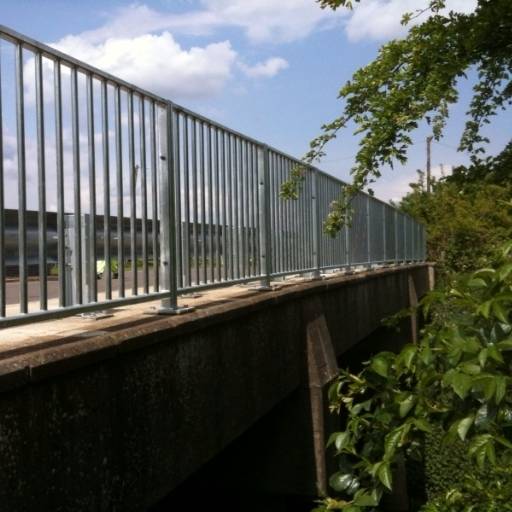
Our guardrails can be installed on bridges to prevent pedestrians from falling into the river, while also serving a decorative purpose.
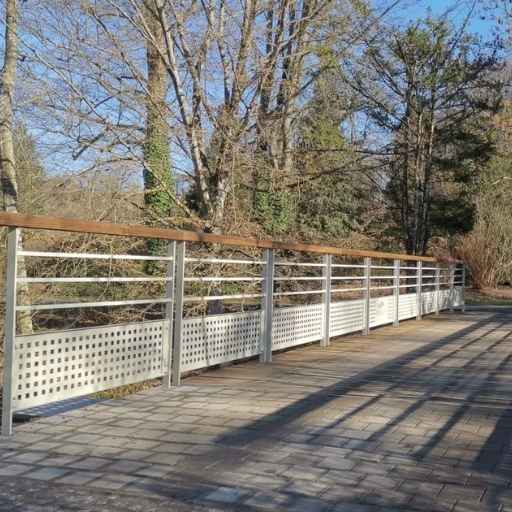
JACKWIN guardrails are installed in municipal parks across multiple countries and are trusted by municipal engineers.
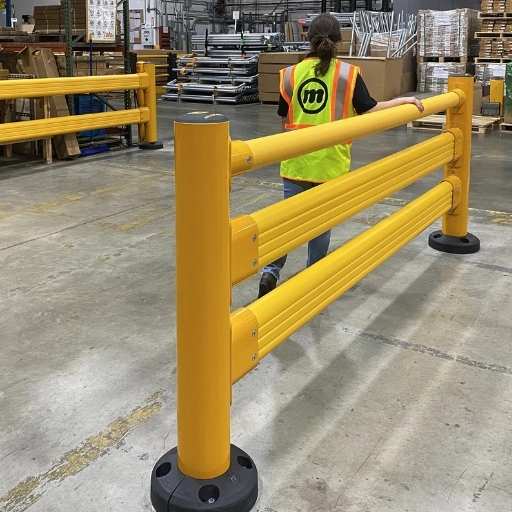
Our guardrails can mitigate vehicle impacts and reduce casualties in industrial settings.

Our guardrails are primarily designed for pedestrian walkways, streets, and other roadways, serving as essential infrastructure for municipal engineering projects.
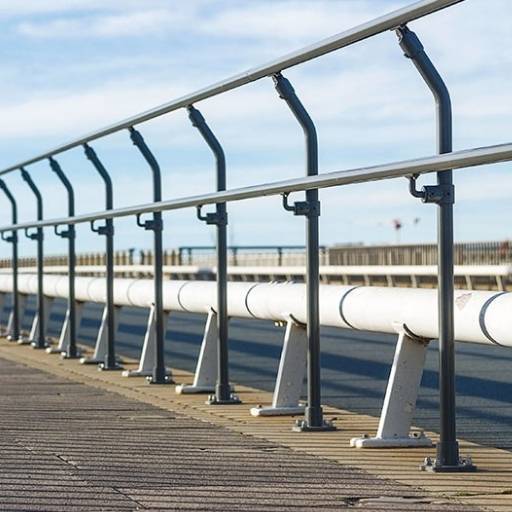
Our guardrails can be used to separate bicycle lanes from motor vehicle lanes, preventing cyclists from being struck by cars.

JACKWIN guardrails are used in rural or recreational areas to separate horse trails from pedestrian walkways and vehicle lanes.
Workshop and Production
JACKWIN factory occupies approximately 4,000 square meters and features a complete production line for manufacturing pedestrian guardrails. Our production processes include galvanizing, powder coating, injection molding, and anodizing.
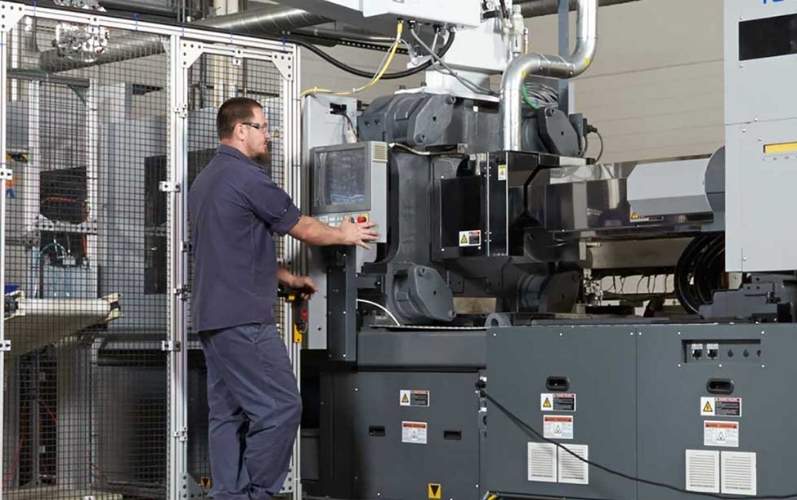
This is our injection molding machine. We produce small components such as connectors through injection molding.
This is our hot-dip galvanizing machine. We apply a layer of zinc to the surface of metal components, providing long-lasting protection and high corrosion resistance.
This is our powder coating line. We apply a layer of powder particles to the surface of the metal guardrail to maintain its aesthetic appeal and durability.
This is our anodizing equipment. For aluminum guardrails, we enhance durability through anodizing.
More Details of Pedestrian Guardrail
View more specifications for pedestrian guardrail as follows.
- Video
Testimonials
According to OSHA regulations, guardrails are primarily defined as barriers installed to prevent workers from falling to lower levels.
OSHA’s requirements for pedestrian walkways consist of five points:
- Walkways must be free of tripping and slipping hazards.
- Surfaces must safely support personnel and equipment.
- Guardrails must be provided at heights exceeding 4 feet.
- Pedestrians and mobile vehicles must be physically separated.
- All openings in the floor must be covered.
Fall Protection
No guardrails have been installed along the edges of the rooftop or roof.
Hazard communication
Containers holding hazardous chemicals are not properly labeled.
Ladders
Erecting a ladder on an unstable or uneven surface
- The minimum width requirement for exit routes is 28 inches.
- Clearance height above each walking surface must be at least 7 feet.
- The minimum vertical clearance for passageways where employees must walk beneath machinery or overhead obstacles is 6 feet 3 inches.
The code requires walkways to be at least 4 feet wide, though this may be reduced to 3 feet for walkways serving a single residential unit.
Secondly, the design live load must be rated at 150 pounds per square foot. The maximum ground cross-slope angle shall not exceed a 1:48 ratio.
Guardrails are divided into two types: job-built guardrails and manufactured systems.
The two types of handrails include integrated handrails and wall-mounted handrails. Integrated handrails are supported by posts, balusters, and a central spindle, while wall-mounted handrails are fixed directly to the wall.
Temporary guardrail, also called portable guardrail, is used to prevent temporary fall hazards.
According to OSHA regulations, temporary guardrails must meet the following requirements: The top rail must withstand a force of 200 lb, whereas the mildrails must withstand 150 lb.
Handrails are an effective means of slowing or preventing pedestrians or workers from falling on stairs or ramps. Guardrails are designed to prevent falls from the open sides of walkways, particularly the open sides of escape routes.


-80x69.png)

